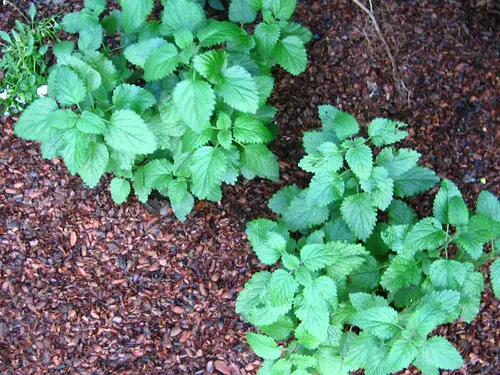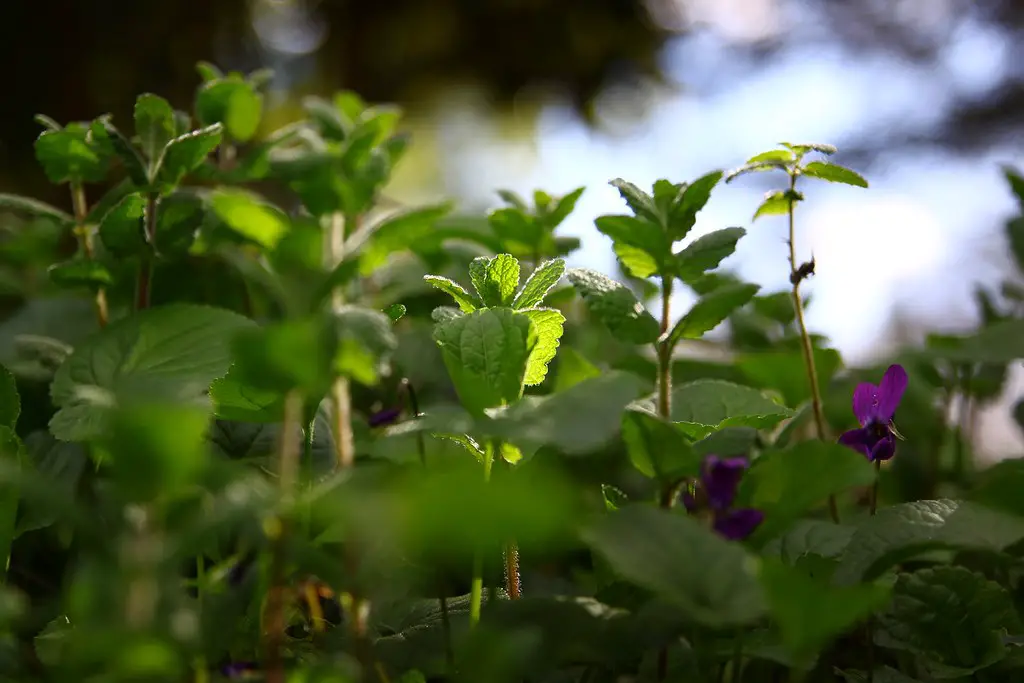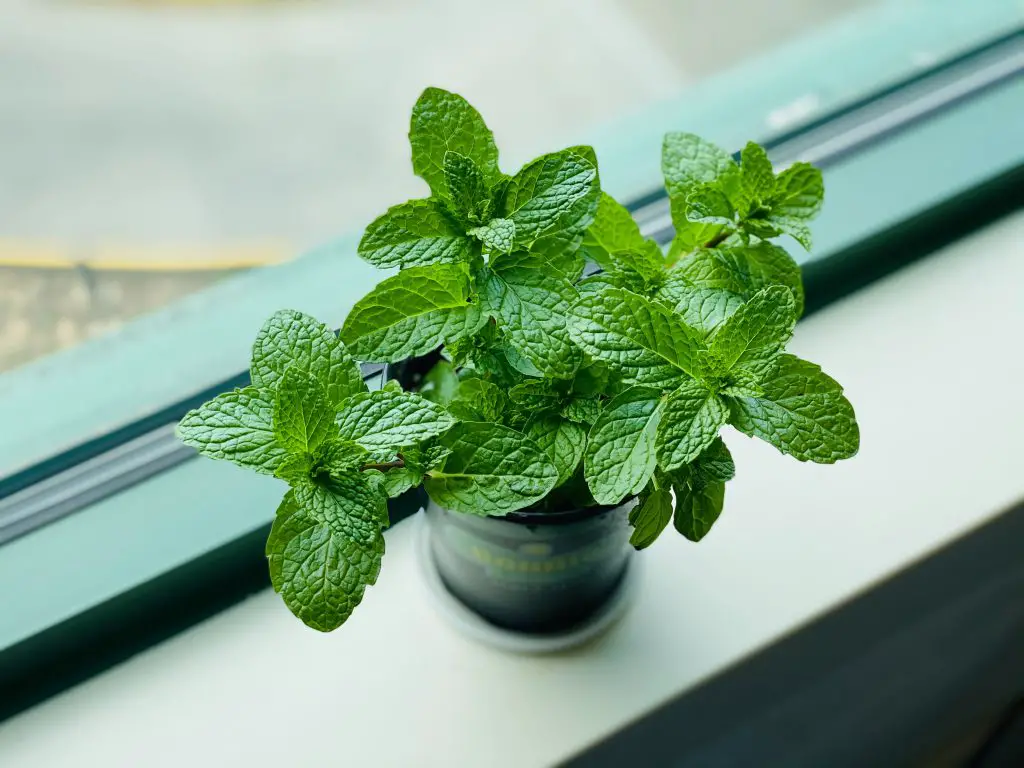Is Lemon Balm And Mint The Same? Lemon balm and mint are popular herbs that are widely used as both ornamental and edible plants in cottage and vegetable gardens alike. Both plants have a similar appearance with the plants featuring lush foliage and a strong fragrance. So are they the same, plant closely related cousins for completely unrelated plants?
Mint and lemon balm are separate and distinct plants that come from the same plant family but a different genus. Mint generally refers to the genus of Mentha which contains around 20 different species of plants. This group of plants includes things like spearmint apple mint, pineapple mint, and chocolate mint. Whereas the name lemon balm refers to a single species, Melissa officinalis.
Both the plants originated in Southern and Central Europe and the Middle East but they now are widely distributed in all countries around the world. Both plants are widely used in teas as flavourings for food and drinks.
They have a similar appearance due to a similar leaf structure. Both plants will reach a height of 1 to 3 ft depending upon the conditions that the plant is being grown in. They also spread over time to cover an area if left to their own devices.

Is Lemon Balm As Invasive As Mint?
Both mint and lemon balm can be considered aggressive and in some cases invasive plants in the garden. In favourable conditions what plants will spread rapidly covering large areas and crowding out other plants.
These favourable conditions include moist well-drained soils that have plenty of nutrients to allow the plants to develop rapidly. However, the mode of spreading is different between the two plants.
Mint spreads by using its root system to invade other sections of the gardens. Whereas lemon balm tends to use seeds to spread greater distances however Lemon balm will also spread out using its root system but not as aggressively as mint.
Due to these different growth mechanisms, there is a difference in the way that the plants spread. Mint tends to take over surrounding areas that are adjacent to its location whereas lemon balm will pop up in areas much further away from the original plant.
This means that mint is generally easier to control lemon balm because all you need to do is constrain the root system of the mint and it will stay put. This is most commonly done by leaving the plant in a pot or even planting it into the ground with the pot still surrounding the root system.
The other option that I use also is to have an isolated dedicated bed for growing mint that has solid sides to prevent the plant from escaping. However, these mechanisms will not work for lemon balm. In this case you simply need to be vigilant to remove any new plants as they appear in your garden.

Can Lemon Balm and Mint Be Used Interchangeably?
Mint and lemon balm are often used in cooking in much the same way because they have a similar leaf structure however they certainly cannot be used interchangeably in recipes without altering the flavour or aroma of the dish.
Lemon balm as the name suggests has a strong lemon scent that is distinctly different from the minty aroma and flavour of plants such as common mint. It is ideally suited as an alternative to using lemons in your cooking.
For those with a kitchen garden, the distinct advantage lemon balm has over lemon trees is that you can start to use the plant in your cooking within one season whereas if you are using a lemon tree usually have to wait a couple of years to start to get a reasonable amount of fruit.
Additionally, lemon balm will survive in colder conditions and a lemon tree which will not tolerate temperatures much below freezing. It will survive zones 4 and upward. However, in zone 4 you will need to protect from to ensure it survives. Mint will also survive in similar conditions.
How To Use Lemon Balm In Cooking
Lemon balm can generally be used in any type of dish that would also be suited for using lemons or any citrus fruit for that matter. The dishes could include things like soups, sauces, vinaigrettes for salads, drinks and seafood dishes.
To prepare lemon balm for use in a range of dishes it is generally recommended that the leaves be washed and then diced finely into small strips. The reason for this is that lemon balm leaves are relatively tough leaves compared to other green such as lettuce. Dicing them up will ensure that they add flavour but do not spoil the texture of the dish.
The other common use of lemon balm is to make tea from the leaves. To ensure you have the best quality leaves for this purpose it is advisable to harvest the plant just before it flowers. Once the leaves have been harvested from the plant it is advisable to wash the leaves thoroughly and then slice them up finely.
The leaves then need to be dried thoroughly over a week or two this can be done by spreading the leaves out on a baking tray and leaving them in the kitchen somewhere. Once the leaves are completely dry they can be stored in an airtight container or even a brown paper bag for several months in a cool dark location until you are ready to use them in a tea.

How To Use Mint In Cooking
Mint is used in much the same way as lemon balm in cooking which means that it is broadly used in a range of similar dishes to the ones listed above. Additionally, mint can also be used in tea as well and the preparation of the leaves for this is identical to lemon balm.
Is It Worth Growing Mint And Lemon Balm In Your Garden?
Even though mint and lemon balm are somewhat aggressive in your garden they are well worth planting. They require very little maintenance and effort to maintain and they provide tremendous flavour hit to a range of dishes.
If you’re worried about them taking over your garden this can easily be prevented simply by growing the plants indoors in a self-watering pot. Using a self-watering pot is highly recommended for both of these plants for the simple reason that they perform best in moist conditions.
The easiest and cheapest way to get going with growing your own mint is to purchase potted herbs from the supermarket. These plants can be transferred easily into a new pot and grown on for years to come.
In the case of lemon balm, supermarkets do not generally sell this plant as a potted herb. This means that you will generally need to purchase the plant from a garden centre however a plant can also be easily grown from seed which is a cheaper option.
How To Grow Lemon Balm And Mint From Seed
As the plants come from the same family they generally do well in similar conditions as such the instructions here can be applied to either plant. To grow the plants from seed it is best to start them off in mid-spring as this will generally allow you to be harvesting leaves by the end of the first season.
If you need to purchase seeds I would highly recommend visiting seeds now as they have a broad range of edible plant seeds at extremely low cost.
Once you have the seeds ready to go the first step is to fill a seed tray with a good quality seed raising mix. If you are not a gardener any old plastic container with a few holes drilled in the bottom will suffice. Things like old margarine containers ideal for this purpose.
Once the container is full of soil the seeds should be sprinkled on the surface of the container and then pressed into the soil to ensure good contact. The soil needs to be watered with a sprayer to avoid disturbing the seeds.
Germination of the seeds will typically take between 7 and 14 days at which point you will see the appearance of the first shoots of the plant. During these early stages, it is particularly important to ensure that the soil remains moist by watering very regularly.
The young seedlings will typically need to spend at least 6 weeks in the seed trays to ensure that they develop sufficiently in size. Once they reach a reasonable size they can then be either placed in a larger pot or planted into the garden.
When placing the plant into the garden it is advisable to select a location that avoids the hot afternoon sun as these plants generally do quite well in partial shade areas and even full shade and some cases. The reason for this is that you will tend to get higher quality leaves.

These plants also prefer moist conditions so one of the options that many people use for mint is to put them into a pot and place them directly under a garden tap which means each time the tap is used for plant gets a bit of water.
In terms of ongoing maintenance, these plants generally require very little care apart from ensuring that they remain moisture thoughout the season and that you provide them with a little winter protection if you live in zone 4.
However, if they are looking a little scraggly they can benefit from having I light prune to remove any dead or diseased leaves.
I hope you found this article useful. If you have any questions or comments please add them at the bottom of the post.
Relevant Articles
Can You Grow Mint From Grocery Store Cuttings?
Why Has My Mint Stopped Growing?
Mint vs Spearmint: What Is The Difference?
Is Catmint Edible? If So, What Is It Used For?

